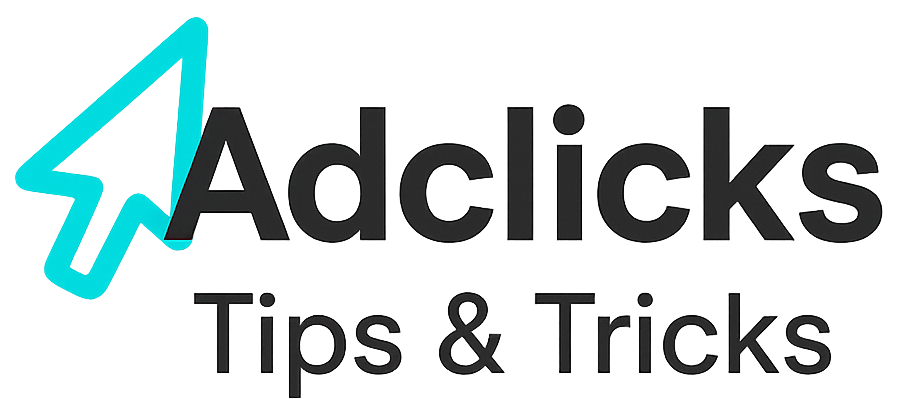Experts-Exchange (EE) is a technical Q&A and expert community platform focused on information technology professionals. It was founded in 1996 and still operates today, supporting a blend of community-submitted questions, expert answers, and technical articles.
Unlike many free Q&A sites, EE operates a subscription or reputation model. Some content is behind paywalls or gated by privileges, which signals that its user base is accustomed to paying (or subscribing) for quality, vetted technical knowledge.
This means that traffic from EE is not casual or entertainment-driven. Users come to resolve technical problems, dig for solutions, and trust in the expertise of contributors. For publishers with technology content, this niche audience offers high intent — if you can deliver the right content and funnel well, monetization can follow via Adclicks placements embedded in your content.
Audience & Traffic Characteristics
EE’s audience is mostly IT professionals: developers, system administrators, engineers, tech leads. Its content reflects programming, networking, software issues, and specialized tech topics.
On traffic stats, public data is limited. Their G2 listing claims EE powers over 4 million technology solutions (i.e. articles or Q&A records) and maintains recurring subscriptions. Their reputation in tech circles suggests a stable, niche audience rather than viral mass reach.
Risk: EE has faced criticism and SEO issues in past years. It was once flagged among “most blocked sites” in Google, due to aggressive SEO tactics and ad models. Also, EE has had practices where they show question pages to Google bots but hide answers from regular users without logging in. These tactics sometimes erode trust, so publishers need to be mindful.
Because the EE audience is specialized and technically literate, content must be precise, useful, and deeper than surface-level how-to. These are readers who know enough to detect weak content instantly.
The Community & Content Culture
EE emphasizes quality, correct answers, reputation, and expert legitimacy. Users often exchange points, reputation, or paid privileges to unlock deeper content. The community expects correctness over flair.
In such an environment, promotional content or generic guides rarely resonate. To attract attention, your content must either answer unsolved problems or bring unique insight. When you do link to your site, it must feel like a logical extension of that expert-level discussion — not fluff.
Because of the gating and subscription structure, many users are already primed for paying for premium content or services. This means publishers can reasonably include monetization (e.g. via Adclicks) on their landing pages, provided the core content delivers high value.
Publisher Fit: Which Sites Can Benefit
The best fit for EE referral traffic are technology / developer / IT content publishers. Examples:
- Deep tutorials, problem-solution guides
- Tool or library documentation
- In-depth architecture or systems design articles
- Code samples, patterns, or open source project writeups
- Technical product reviews or benchmarks
- Niche areas like cybersecurity, cloud, devops
For content that is not tech-centric (e.g., fashion, general lifestyle), EE is not a good fit. Even tech-adjacent content (e.g. “tech in business”) must be tightly tied to practical problems that EE users care about.
When EE users click to your site, the landing page should deliver the complete solution they expected, not gate them behind walls. Embedding Adclicks ad units or affiliate links within that high-value content lets you monetize without breaking trust.
Strategies to Drive Users from EE to Your Site
1. Answer questions with extra value
Find questions on EE that are partially answered or lack depth. Provide a solid answer in EE but also reference “a full walkthrough” on your site. The answer should feel complete even without the link, but invite further reading.
2. Create technical articles that complement EE content
Publish deep articles (e.g. “Beyond the EE answer: full project code, diagrams”) and link to them from relevant EE Q&A or topic pages. Users who want more detail will click through.
3. Use relevant keywords / SEO alignment
Many EE pages are indexed by Search Engines. If your article uses the same keywords (e.g. function names, error messages), Search Engines may show your site alongside EE pages. That gives you passive referral potential.
4. Engage in EE community & publishing
If you can contribute high-quality content or become a recognized member, your links will be more trusted. Avoid overt self-promotion — focus on helping first.
Always ensure that any link to your site is contextual — the user should feel they are going on to see the “full content version,” rather than being baited.
Landing Page Design for EE Referral Traffic
When users click from EE , your landing page must deliver precisely what was promised in the EE context:
- Use the same error message, function name, or snippet in the headline or opening, so the user confirms they’re in the right place
- Provide a step-by-step, code-based solution, diagrams, downloadable examples, or sample projects
- Between sections or at logical breaks, embed Adclicks placements (banners, inline ads, “related tools” links) aligned to the technical context
- Page must be fast, mobile-friendly, and minimal in distractions
- Optionally include a section or “next step” linking back to EE thread or a mirror answer
If the landing page feels like a full solution plus bonuses, users are more likely to engage, read fully, and interact with your monetization units.
Challenges & Considerations
- Competition with EE itself: Users may prefer staying within EE for the answer than leaving. You must offer value beyond what EE provides.
- Paywalls and gating: Some EE answers or features are gated; readers may be reluctant to click out if they fear paying again.
- SEO penalties: If you mimic too much or use aggressive SEO tactics, Search Engines may penalize you. EE has had reputation issues with search.
- High expectations: EE users are experts or practitioners. Weak content will be flagged or dismissed.
- Traffic volume limitations: EE is niche. You won’t get viral reach — the goal is quality over quantity.
To counter these, always overdeliver, maintain technical excellence, and build authority incrementally.
Action Plan: 10 Steps to Use Experts-Exchange as a Publisher Traffic Source
- Define your tech niche (e.g. Python performance, Kubernetes, security) aligned with EE demand.
- Monitor EE questions in that niche — use tools or follow tags.
- Answer questions on EE, contributing real value, and link to extended content on your site.
- Write in-depth technical articles that expand EE answers (code, visuals, examples).
- Optimize landing pages to mirror EE context, embed Adclicks placements, and deliver full solutions.
- Build authority on EE — consistent, high-quality contributions build trust.
- Align SEO keywords with EE pages (error messages, function names) to capture search overlap.
- Analyze performance: track which EE topics, answers, or articles drive clicks, dwell time, conversions.
- Iterate: refine your content, placement, and link style to improve conversion.
- Scale slowly: expand to related tags, topics, or adjacent niches after initial success.
Relevant Links
- Support: https://support.snipesearch.co.uk/
- FAQ: https://adclick.snipesearch.co.uk/index.php?page=index/faq
- Contact Form: https://adclick.snipesearch.co.uk/index.php?page=user/support
Stay Connected
- Snipesocial: https://www.snipesocial.co.uk/pages/snipesearch
- Twitter: https://twitter.com/snipesearch_uk
- Facebook: https://facebook.com/snipesearch
- LinkedIn: https://linkedin.com/company/snipesearch/
- VK: https://vk.com/snipesearch_uk
- Focus: https://focus.xyz/snipesearch
- YouTube: https://youtube.com/@snipesearch
- diaspora: https://diaspora.snipesearch.net/people/7431fcf0806c013e936e00163c6e7bdf
Analytic Tools
- Rommie Visitor Analytics: https://rommie.net/
- StatCounter: https://statcounter.com/




